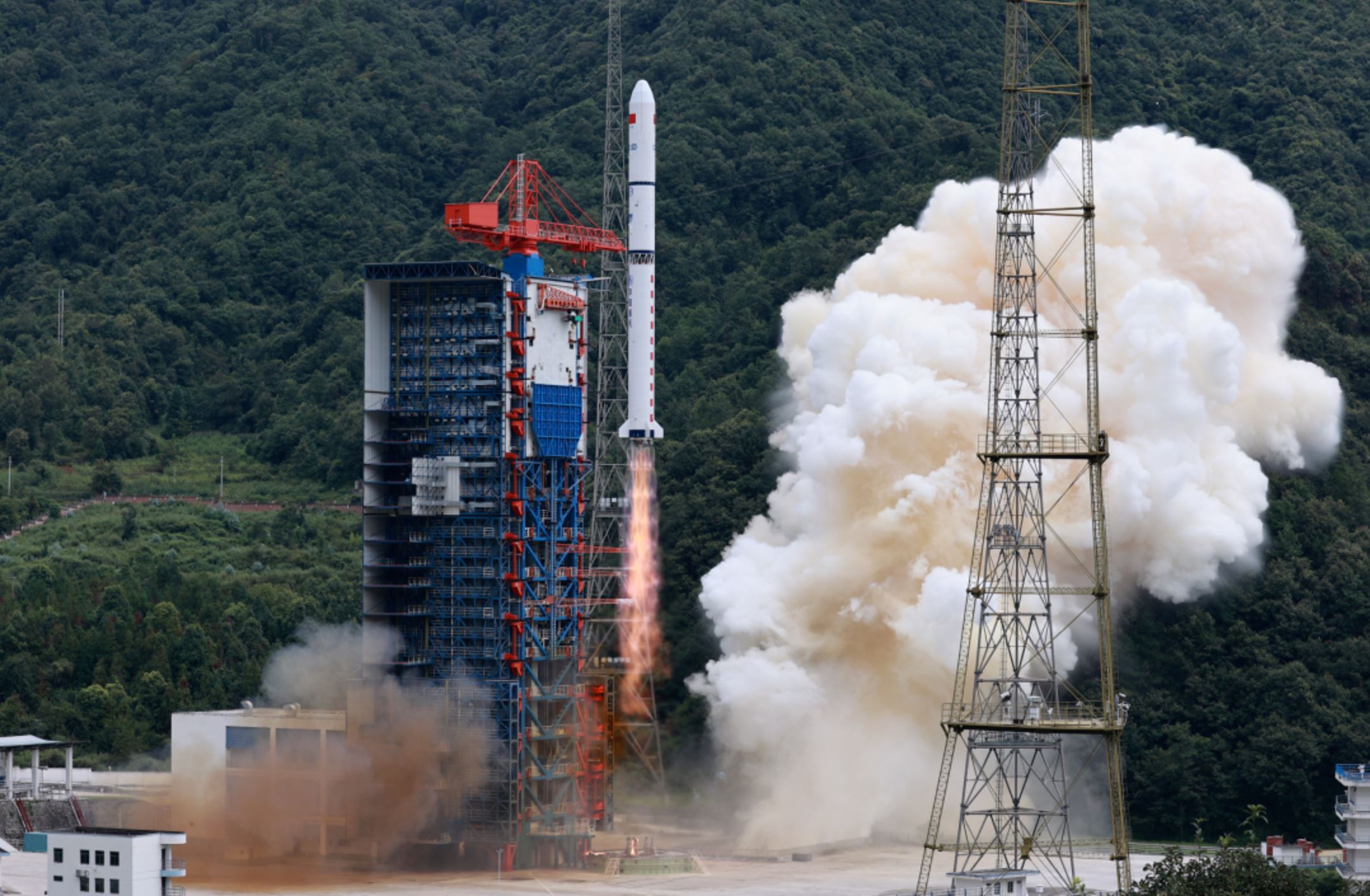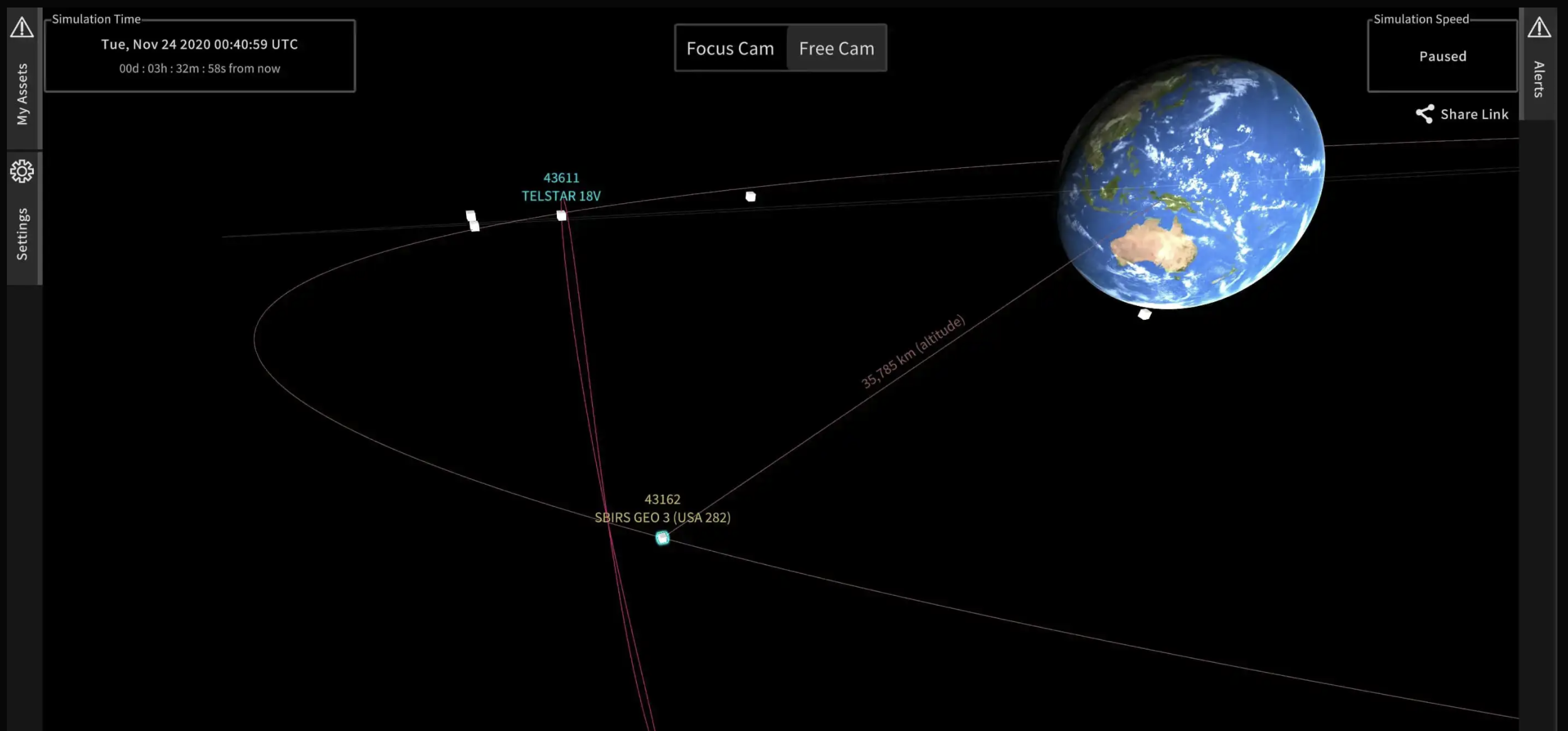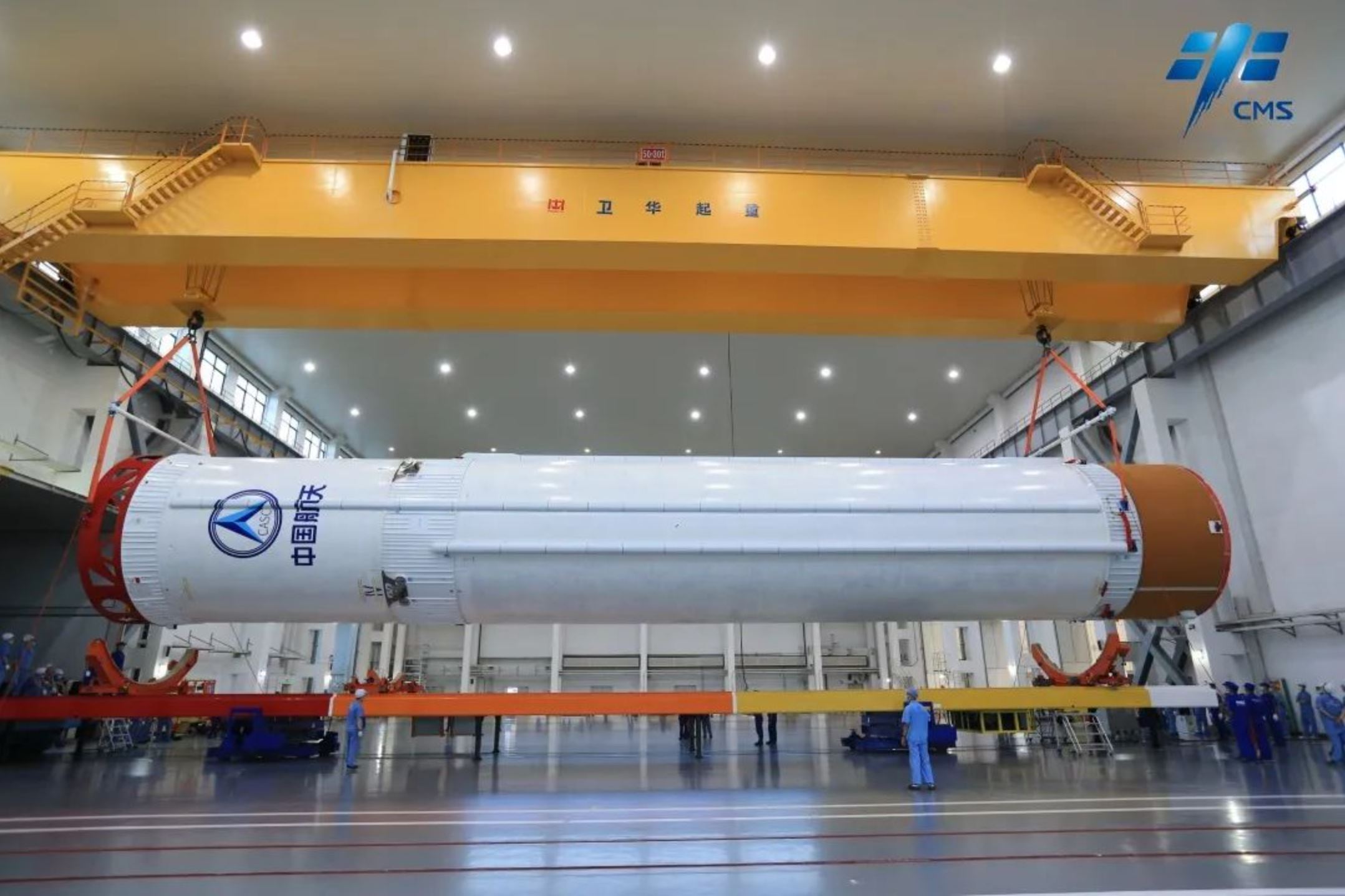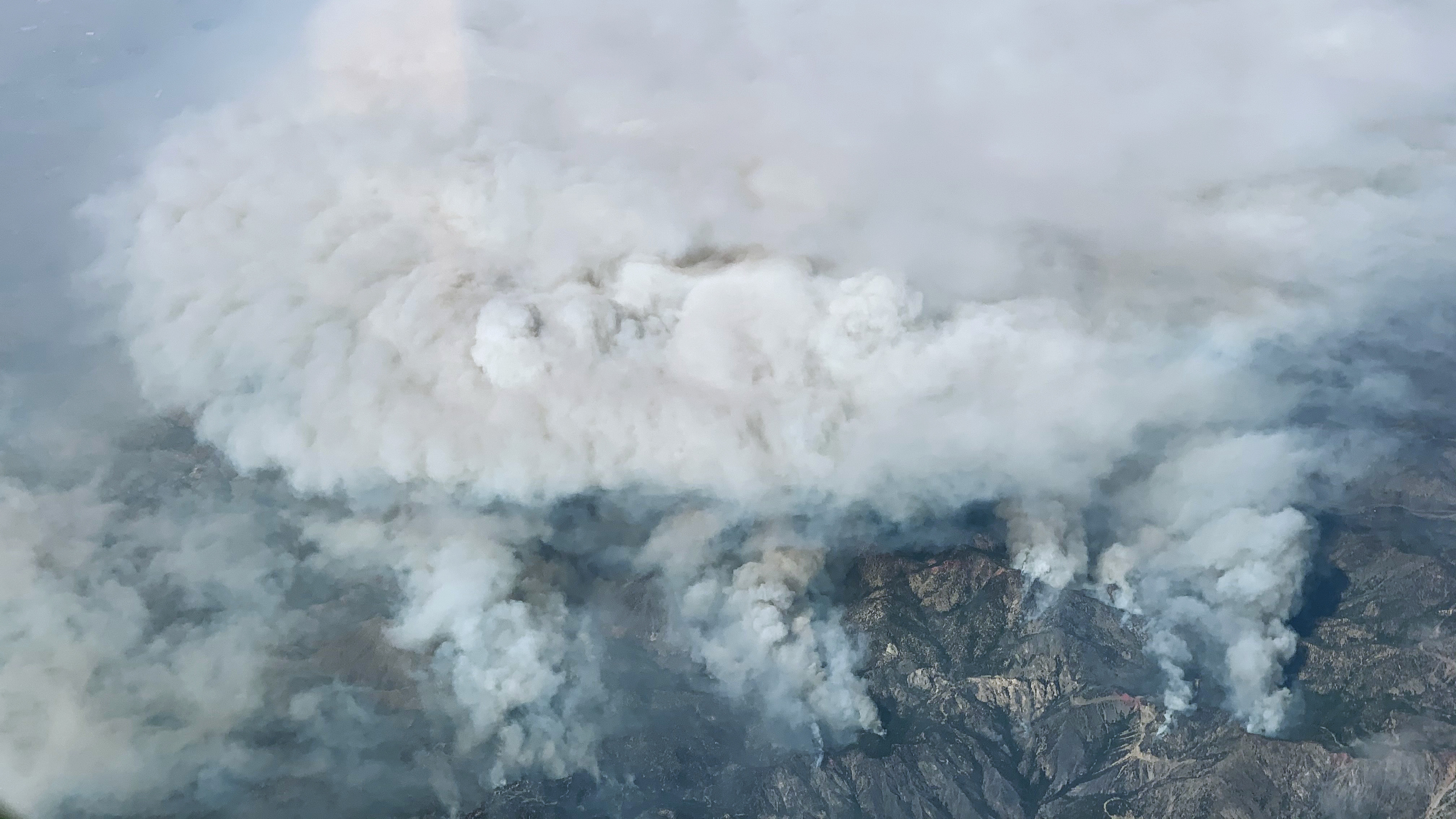China performs two launches inside two hours
Original Publication Date: 2022-09-06 12:27

China conducted its 36th and 37th orbital launches of 2022 within a couple of hours of each other. A Kuaizhou-1A solid rocket lifted off into clear skies from a transport erector launcher at the Jiuquan Satellite Launch Center in the Gobi Desert. One hour and 55 minutes later, a Long March 2D lifted off from Xichang, delivering a fifth batch of Yaogan-35 triplets.
Space Force extends Saber Astronautics’ contract for space visualization software
Original Publication Date: 2022-09-05 14:57

Saber Astronautics won a $540,000 small business contract known as a TACFI, or Tactical Funding Increase. Award follows a $1.8 million U.S. Air Force Small Business Innovation Research award. Space Cockpit uses 3D graphics and gaming-like controls.
China begins launch campaign for final space station module
Original Publication Date: 2022-09-05 09:44

Work to assemble a Long March 5B heavy-lift rocket is underway at Wenchang spaceport as China prepares to complete the construction of its Tiangong space station. The rocket is now being prepared for an early October launch of the 22-ton Mengtian (“dreaming of the heavens’) experiment module. China intends to keep the space station permanently inhabited for at least a decade, gaining human spaceflight experience.
NASASpaceFlight.com
The SSLV or Small Satellite Launch Vehicle conducted its launch debut from Sriharikota, India on Sunday, August 7 at 03:48 UTC. An issue with the fourth stage resulted in the satellites being deployed in an unusable orbit. The SSLV program’s genesis was a December 2015 National Institute of Advanced Studies proposal to create a “Small Satellite Launch Vehicle-1”
Commercial Archives
NASA has scrubbed the second launch attempt of the Artemis I mission from the Kennedy Space Center in Florida. A liquid hydrogen leak was detected at the vehicle-to-ground interface on the LH2 Tail Service Mast Umbilical. This was the fourth time teams loaded liquid hydrogen on the vehicle, and the fourth time something in the LH2 TSMU leaked hydrogen.
International Archives
The seven members of the Expedition 67 crew aboard the International Space Station had yet another action-packed month in August 2022. Expeditions are long-duration, research-based astronaut missions aboard the ISS. Each Expedition lasts around six months, typically beginning and ending with Russian crew rotations.
Chinese Long March 3B Launches APStar-6C Communications Satellite – Spaceflight101

China conducted a rare commercial launch of a Long March 3B rocket with the APStar-6C communications satellite for APT Satellite Holdings to join their constellation of Geostationary Communications Satellites. Long March 3B lifted off from the Xichang Satellite Launch Center at 16:06 UTC on a mission of under half an hour to lift the spacecraft into an elliptical Geostationary Transfer Orbit. The satellite will deliver VSAT services, video distribution, Direct-to-Home television and high-throughput cellular backhaul.
Blue Origin’s New Shepard Reaches new Heights in latest Test Flight – Spaceflight101

Blue Origin's reusable New Shepard launch system reached new heights in a test designed to expand the vehicle’s operational envelope by sending it to a peak altitude of 107 Kilometers. Sunday’s flight marked the second for this particular set of hardware, following up on the successful December 2017 mission that debuted “Crew Capsule 2.0” The mission carried five utilization payloads from NASA’s Johnson Space Center, three German university payloads and a commercial tech demonstration payload flown by Solstar.
News – Spaceflight101

Europe’s Copernicus satellite fleet is gearing up for the arrival of its next addition on Wednesday. A Russian Rockot booster set to blast off from the Plesetsk Cosmodrome at 17:57 UTC with the Sentinel-3B multi-function satellite.
ISS Updates – Spaceflight101 – International Space Station

A veteran NASA spacewalker and an EVA rookie from Japan ended their week with nearly six hours of work outside the International Space Station on Friday. The restoration of the Station’s Mobile Servicing System started last year and continued in January to provide Canadarm2 with a new pair of grappling hands.
Featured – Spaceflight101

SpaceX Falcon 9 takes to the skies over Florida’s Cape Canaveral Monday afternoon. First of at least six cargo ships inbound to the U.S. Segment of ISS this year. Dragon spacecraft will deliver science gear, supplies and maintenance hardware to the orbiting laboratory.
Re-Entry: Long March 11 Rocket Body – Spaceflight101

The CZ-11 fourth stage used leftover propellant for a partial de-orbit maneuver, lowering its perigee to 120 Kilometers to significantly accelerate its orbital decay. The upper stage of a Long March 11 rocket re-entered the atmosphere on April 29, 2018 after only three days in orbit.
NASA Studies Find Previously Unknown Loss of Antarctic Ice – Climate Change: Vital Signs of the Planet

New research on Antarctica, including the first map of iceberg calving, doubles the previous estimates of loss from ice shelves. The greatest uncertainty in forecasting global sea level rise is how Antarctica’s ice loss will accelerate as the climate warms. “Antarctica is crumbling at its edges,” says JPL scientist Chad Greene, lead author of the calving study.
NASA Data on Plant ‘Sweating' Could Help Predict Wildfire Severity – Climate Change: Vital Signs of the Planet

NASA study uses data from the ECOSTRESS instrument aboard the space station to better understand why some parts of a wildfire burn more intensely than others. Some areas where vegetation had sufficient water burned more severely, possibly because fires had more fuel to consume. Other research has shown that wildfire season across the Western U.S. Is starting earlier in the year and increasing in length and severity.
My Favorite Martian Image: ‘Enchanted’ Rocks at Jezero Crater

The rocks of the crater floor are igneous in origin, having formed billions of years ago from molten rock. Over time, mud, silt, and sand brought into the lake that filled Jezero compressed and solidified into thin layers of sedimentary rock. If microscopic organisms were also present during sedimentary rock formation, they could have been captured within the layers.
NASA’s Webb Takes Its First-Ever Direct Image of Distant World

Astronomers have used NASA’s James Webb Space Telescope (JWST) to take a direct image of a planet outside our solar system. The exoplanet is a gas giant, meaning it has no rocky surface and is not habitable. The finding is detailed in NASA’s latest JWST blog entry.
Explore the Solar System With NASA’s New-and-Improved 3D ‘Eyes’

Learn the basics about dwarf planets or the finer points of gas giants. Ride alongside no fewer than 126 space missions past and present. Scroll through rich interactive journeys, including Voyager’s Grand Tour of Jupiter, Saturn, Uranus and Neptune. You can rotate objects, compare them side by side, and even modulate the perspective as well as the lighting.
Engineers Solve Data Glitch on NASA’s Voyager 1
Engineers have repaired an issue affecting data from NASA’s Voyager 1 spacecraft. Earlier this year, the probe’s attitude articulation and control system began sending garbled information about its health and activities. The team has since located the source of the garbled information: The AACS had started sending the telemetry data through an onboard computer known to have stopped working years ago.
NASA’s Webb Detects Carbon Dioxide in Exoplanet Atmosphere

First clear, detailed evidence for carbon dioxide ever detected in a planet outside the solar system. Understanding composition of a planet’s atmosphere is important because it tells us something about the origin of the planet and how it evolved. “Detecting such a clear signal of carbon dioxide on WASP-39 b bodes well for the detection of atmospheres on smaller, terrestrial-sized planets,” said Natalie Batalha of the University of California at Santa Cruz.

